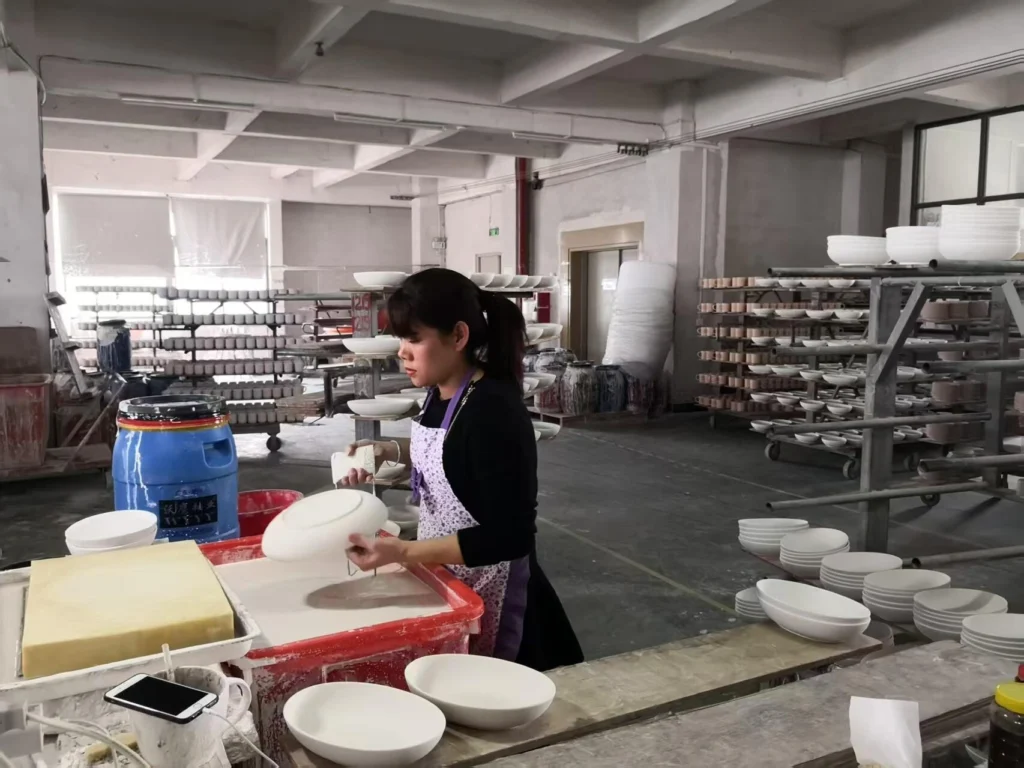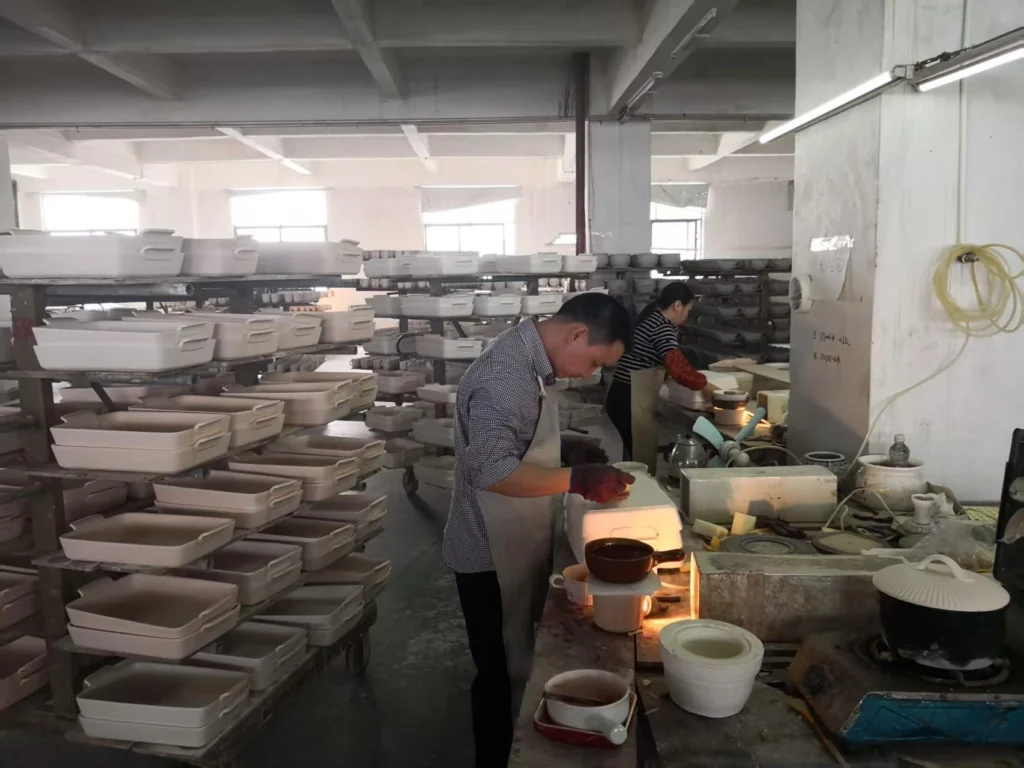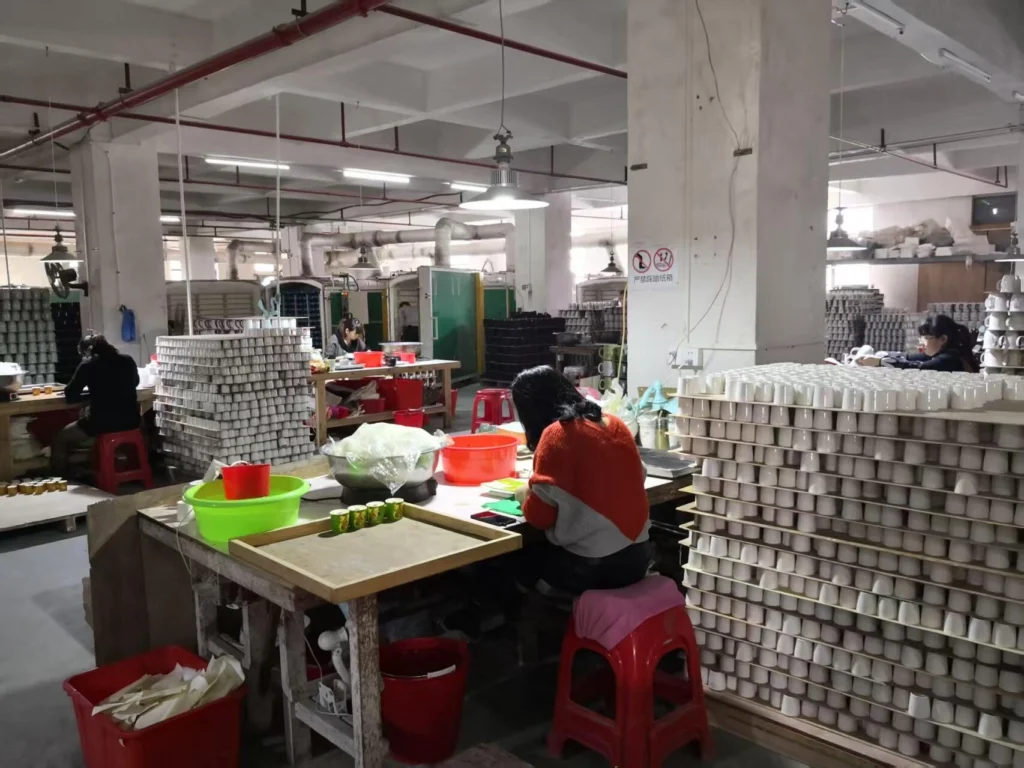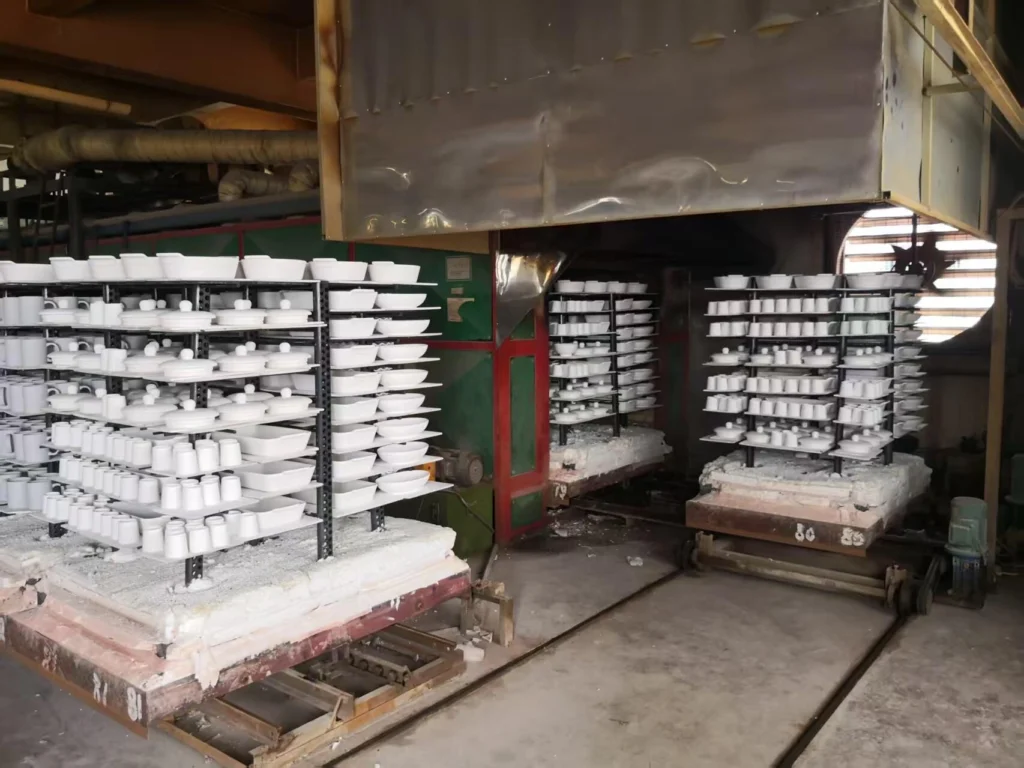Ceramic baking dishes are essential kitchen tools, prized for their even heat distribution and durability. Their creation involves a precise sequence of steps, transforming raw earth into functional art. Here’s a breakdown of the manufacturing process:
1.Raw Material Prep: Selection & Refinement
Selection: We start by sourcing high-quality natural minerals, primarily kaolin (china clay) and ball clays. They need fine particles, low impurities, and stability under high heat – the essential foundation for good bakeware.
Grinding: The chosen materials are mixed with water in precise ratios and ground into a fine liquid suspension, called “slip,” in large ball mills.
Filtering (De-watering): Using filter presses, we squeeze out the excess water from the slip, much like wringing a sponge, resulting in firmer clay blocks.
De-airing (Pugging): This step is crucial! We feed the clay blocks into a vacuum pugmill. The machine kneads the clay under vacuum pressure, forcing out any trapped air bubbles. Skipping this properly invites cracks during drying and firing.
2.Forming: Shaping the Clay
Slip Casting: We pour the prepared liquid slip into porous plaster molds. The plaster acts like a sponge, drawing water out of the slip, causing a solid layer of clay to build up against the mold walls.
Draining: Once the desired wall thickness is achieved (usually within minutes), we drain out the excess slip from the mold’s center.
Demolding: After the clay layer firms up slightly, we carefully remove the soft, damp clay shape (the “greenware”) from the mold.
Fettling (Trimming & Smoothing): Fresh out of the mold, the greenware has seams and excess clay (like mold lines). While it’s still damp and pliable, our team meticulously trims these away using tools and sponges to smooth surfaces and refine edges.
3.Drying: Evaporating Moisture

The delicate greenware now needs to lose its moisture slowly. We set it aside for controlled air drying or place it in humidity-regulated drying chambers. Patience is key here – slow, even drying prevents warping or cracking as the physical water evaporates.
4.Bisque Firing: The First Fire
Once bone dry, the pieces are ready for the kiln. We load them onto kiln cars and fire them to around 900-1000°C (1650-1830°F).
This initial firing, called the “bisque fire,” burns away any remaining organic matter and chemically combined water.
What emerges is “bisqueware.” It’s harder, porous (still a bit chalky), and usually pale white or buff-colored. This state is perfect for accepting glaze.

5.Glazing: Applying the Functional Coating
Glaze Prep: Glaze is our carefully formulated “liquid glass” recipe. It’s a blend of glass-formers (silica), fluxes (like feldspar), stabilizers (like alumina), colorants (metal oxides), and water. Meeting stringent food safety standards is non-negotiable.
Application: We dress the bisqueware in its glaze coat, either by dipping it into the glaze slurry or spraying it on evenly.
Wiping Feet: Glaze must be wiped clean from the bottom (the foot) where the dish will stand. If left, it would fuse the piece to the kiln shelf during firing.
Optional Decoration: For patterned dishes, we can apply designs or colors directly onto the bisque before glazing (this is “underglaze” decoration). After the final glaze firing, this decoration becomes permanent, sealed under the glassy surface.



6.Glost Firing: The Final Transformation
Glazed pieces undergo their most critical step: the glaze (glost) firing. We load them into the kiln with extra care. Depending on the clay body and glaze recipe, we fire them to their maturation temperature, typically between 1200°C and 1300°C (2190°F-2370°F).
Inside the intense heat of the kiln:
The clay body vitrifies – becoming denser and less porous.
The glaze melts into a smooth, impervious glass coating, permanently bonding with the body beneath.

Precise control of the firing schedule – the rate of temperature climb and descent, the peak temperature, and the kiln atmosphere (oxidation/reduction) – is absolutely vital. This determines the final outcome: the exact color, sheen, strength, and crucially, the thermal shock resistance needed for oven use.
7.Quality Control & Inspection: Ensuring Excellence
Once cooled, every single piece undergoes rigorous checks:
Visual Inspection: Hunting for glaze defects (pinholes, crawling, blisters, discoloration), checking surface smoothness and color consistency.
Dimensional Check: Verifying shape accuracy and freedom from warping or distortion.
Structural Integrity: Examining for cracks, chips, or glaze scratches.
Performance Testing: Samples undergo thermal shock testing – rapid heating and cooling cycles – to ensure they can withstand oven use without cracking.
Safety Testing: Conducting lead and cadmium release tests to guarantee compliance with strict food safety regulations (e.g., FDA, LFGB).
8.Packing & Shipping: Ready for the Journey
Approved baking dishes are cleaned, labeled, and securely packaged using protective materials to prevent damage during transit.
They are then shipped to distributors, retailers, and ultimately, kitchens around the world.
Conclusion: Precision and Craftsmanship
The journey from raw mineral to a finished ceramic baking dish is a testament to controlled chemistry, precise engineering, and meticulous craftsmanship. Each step – from refining the clay to the intense heat of the glaze firing and the final quality checks – is essential to produce a durable, safe, and beautiful product ready to perform reliably in your oven for years to come.
Myoung Ceramics
-Professional daily ceramics supplier

Specializing in the production of daily ceramics for 30 years, including ceramic tableware, ceramic baking trays, ceramic candle jars, ceramic bathroom set, etc.
We support OEM and ODM, and also have a large number of hot-selling products in stock, contact us to get free catalogs and samples.
At the same time, it is sold to more than 100 countries and regions around the world, and is loved by customers and consumers.
Hope to be your reliable partner.















